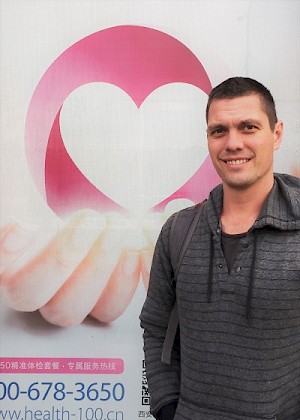Physical Therapies in China
28 January 2018
In part two Dee looks more specifically at the Physical Therapies and Hand Therapy in particular in the Chinese Healthcare system.
Physical Therapy in China has many faces, from the traditional to the modern. It can encapsulate the slow movements of their national art form, tai chi to the technology driven wearable devices. In this second installment, I will give a broad overview of a rapidly changing field.
Structure
With an enormous population comes enormous choices and Allied Health is no different. Physical therapy and specifically hand rehabilitation can be found in many different guises. Treatment can be obtained in both private and public hospitals usually through a rehab department. Some private clinics work closely with surgeons whilst others are staffed by technicians that will refer to the hospital as required. Traditional Chinese Medicine (TCM) routinely sees both chronic and acute injuries or if you feel particularly wealthy you can opt to visit a certified hand therapist in America via your private insurance. It was only in 2005 that the first physiotherapist university course was opened in China but there has been rapid growth since then. It is surprising that this is yet to be considered a specialist field considering China's long history of physical well being. Tai chi, massage and acupuncture have been an integral part of their culture for hundreds of years and this forms the basis of a lot rehabilitation programs.
Society Influences
Another cultural influence is the huge emphasis on family and community networks. It is not unusual for mothers, grandmothers, friends and even neighbors to attend an appointment. There can be up to 20 people crammed around the patient offering advice and chatting. When we visited, it was also noted that even waiting patients were encouraged to watch another patients treatment. This is starkly different to Australia where privacy and patient attention is at the forefront of care. Of course their are obvious negatives surrounding this model however there was also a much greater support network for activities of daily living and any psychological difficulties. Interestingly, we were informed that hand injuries don't have the same 'concern' as say a leg condition. This may be the result of the support at home to complete these tasks. Minor concerns eg stiffness or a possible fracture would mostly be left untreated.
Major Injuries
Similar to Australia, there is a large number of tradespeople injured at work sites. These are covered by a similar scheme to Workcover in Australia. All other injuries are either funded privately or through a long public waitlist. The majority of Chinese citizens with serious hand injuries will present at hospital and be seen by the surgical department. A growing number of private practices with surgeons and physiotherapists are also starting to see a proportion of these. Once a patient is diagnosed and usually operated on - the level of surgical expertise is high - the patient will enter the hospital for an extended stay. These patients will then be under the direction of the surgeon whom may request specific physical therapies. It should be noted that physiotherapist and occupational therapists do not usually develop, or have a say in, these rehab programs.

Treatment
Unlike Australian hand rehab, there is a greater emphasis on passive physical therapies. It is considered that physical rehab is actually a physical product being applied, rather than a patient also being involved in exercises and education. Electrical devices, like light therapy, ultrasound, massage and in the TCM stream, acupuncture are routine treatments. It is performed usually by minimally trained technicians (excluding acupuncture), under the direction of the surgeon. It should be mentioned that dry needling does not seem to be prevalent despite the close connection with acupuncture. Exercises to decrease stiffness and increase range of motion is very limited. This also ties into the lack of set protocols for individual conditions, which was the focus of David Coles' workshops.
Tendon Repairs
Many patients are operated on after acute tendon injuries. Many of these patients have minimal or ad hoc treatment and patients usually report some stiffness (however follow up is not always achieved). David Coles went through the Active Hand Therapy post surgical repair protocols. With discussions and guidance on splinting protocols, wound management, tendon exercises for different injuries and education for patients. These workshops were met with enthusiasm however some notable barriers still exist to achieve better outcomes.
Barriers
As mentioned before, patient referral (see Physician, part one) to a therapist may take weeks to months and often by this stage tendon scarring and decreased tendon gliding has occurred. Societies expectations are also relatively low when it comes to improving hand function, with small improvements in range of motion acceptable. Splints and rehab equipment may not be covered by health funds (surgery is often fully funded) and these may be deemed unnecessary. Technician expertise is variable leading to huge differences in quality of care.

Positives
The face of therapy in China is changing. There is a huge momentum to adopt standardised protocols and evidence based training. Multiple university courses now exist and we visited clinics where therapists and surgeons were working together. Chinese citizens are becoming prudent advocates of their own care and an expectation of better outcomes are driven by this. Private healthcare is also increasing at a high rate which allows quicker access and usually higher reimbursements for the physical therapies. What an exciting and ground breaking time for hand therapists.
Thank you to all the many technicians, doctors, therapists, TCM practitioners and support personnel. The warmth and friendliness of everyone we met coupled with their enormous drive is truly inspirational. Thanks also to our wonderful guides for putting up with 'Just one last question....'
by Dee Coles
